Does dressing well actually matter in the corporate world?
Power dressing, business casual, or comfy chic? Here's what your fashion choices say about your workplace persona.

When Andrea Sachs (played by Anne Hathaway in the 2006 dramedy The Devil Wears Prada) wore her shabby clothes and “cerulean blue” sweater to work, her co-workers perceived her to be disinterested in her job—as untrue as that was. Think of her makeover and how that became the turning point of her career or when one of the first instructions HarveySpecter (played by Gabriel Macht in the 2011 TV series Suits) gave his protégé Mike Ross (Patrick J Adams) was to buy new suits, a far cry from the issue of committing a fraud that was at hand. The point is dressing well matters. Your fashion choices are telling—and they tell us more than just where you shop from.
So, while throwing on a basic white tee and a pair of denims doesn’t necessarily mean you’re not dedicated enough, it does imply it. We believe dressing well earns you a few brownie points if you have your eye on climbing that corporate ladder. But in a world where workplaces are increasingly becoming more flexible with their professional practices, we’re curious to know what fashion choices say about an employee, and a style guide to ace your look.
Power dressing or not
Think of the attention commanded by Suits characters Jessica Pearson (Gina Torres), Harvey Specter, or The Bold Type’s Jacqueline Carlyle (Melora Hardin) when they walk into a room. While their charisma and character form a major part of their success, I, personally, wouldn’t take away from the impeccable pencil skirts and noteworthy ties. “If you dress well, there is automatically a level of confidence, which one starts placing on that individual,” says Shashwat Garg, Director (Deal and Advisory), PWC. “However, in the long-run what you do, your intellect and work ethics override how you dress.”
Conversely, we ask, what happens if you don’t dress well? While it doesn’t entirely hamper your chances of professional growth, it does imply that you cannot be relied upon or, as culinary editor and journalist Smitha Menon says, you don’t take yourself very seriously.
Not all business
Let’s see what makes the cut, what doesn’t.
For those working behind-the-scenes in the fashion industry: Stylist Devki Bhatt says, “Easy pants or bottoms paired with breathable tops, with an element of layer (denim jackets, bombers, cardigans) for those freezing sets.”
If you work in a legal firm like Pearson Specter: Andhyarujina says a defined work wardrobe is the solution. “That should include smart jackets, shirts, and trousers. The colour palette is usually black, grey, and navy blue.”
Those in the social sector: Kristine Rodricks, a senior associate at the non-profit called Saturday Art Class, says dressing simply is the key in this field. “Your choices must be formal and respectable to the space that you’re in. Palazzos or salwar kameez are usually a safe bet.”
We didn’t forget the men: Shashwat says not much has changed. “But what has evolved is that people are now more conscious of the quality.” That does not mean men have to be boring—after all, what are accessories for? Think belts, pens, cardholders, and office bags!
What are the options?
Dressing expectations for corporates have evolved over the years—so while shorts and tank tops still don’t make the cut, a few other styling options do. In a few industries, particularly finance and legal firms, expectations remain conventional—think classic formals for men and Indian or Western attire for women. This also holds true for those in the social sector where professionals must dress according to cultural contexts and avoid making communities feel marginalised. In the creative sector, the trajectory has been vastly different. “Expectations have changed since I began my career 15 years ago,” says Menon. “Now, it is okay to be slightly more casual in the workplace. The rise of athleisure also contributed to this. For instance, one can wear sweatpants to work as long as they don’t look too much like track pants. But this is still in the media and a few
other creative industries.”
Final word
Celebrity stylist Allia Al Rufai suggests working with staples and neutrals with an occasional burst of colour if that’s your thing. “Create a wardrobe where mixing and matching is a seamless process and going from day to evening can be fluid with changing up accessories or switching to a statement jacket,” she adds. Stylist Devki Bhatt agrees. “If there has to be a common factor in dressing for all vocations, it would be comfort and layers.”
PS: Nothing can stop you when you have your confidence, work ethic, and passion in place.
Lead image credit: Pexels.
This article originally appeared in the July-August 2024 issue of Cosmopolitan India.
Also read: Navigating your partner's fantasies in a relationship
Also read: Our favourite couple moments from the recently-concluded Paris Olympics 2024
more from Fashion
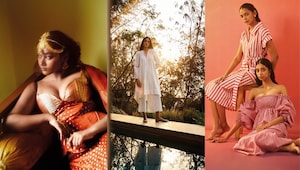
Five Bengaluru designers to have on your radar

Have you found true love this cuffing season or are you just “winter coating” for the holidays?

The Cosmo-approved holiday beauty list to help you glow through party season

Why 'Heated Rivalry' has everyone hot, bothered, and obsessed
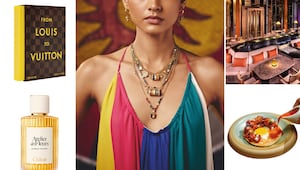
Regal revivals, fashion shake-ups, and everything new we’re obsessing over this month

When is the new season of 'Euphoria' out? Plus 5 things we know about it
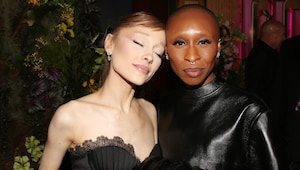
Why your best friend might be the most stable relationship you’ll ever have
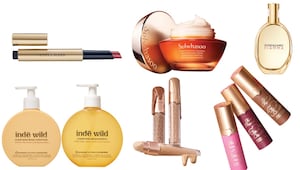
The beauty drops currently living rent-free on our vanities
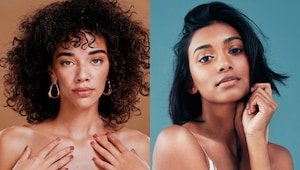
Everything you need to know about dark spots before you try to fade them

I’m a romance writer—my husband and I lived out the sex scene I was writing
